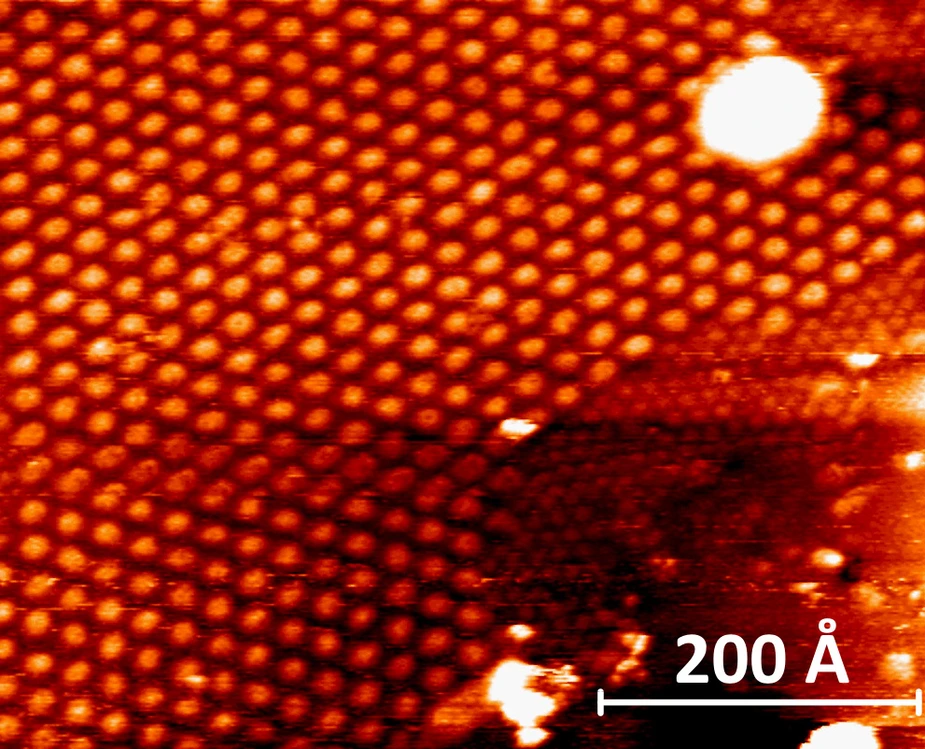The miracle material graphene: convex as a chesterfield

Graphene possesses extreme properties and can be utilised in many ways. Even the spins of graphene can be controlled through use of a trick. This had already been demonstrated by a HZB team some time ago: the physicists applied a layer of graphene onto a nickel substrate and introduced atoms of gold in between (intercalation). The scientists now show why this has such a dramatic influence on the spins in a paper published in 2D Materials. As a result, graphene can also be considered as a material for future information technologies that are based on processing spins as units of information.
Graphene is probably the most exotic form of carbon: all of the atoms are bound to one another solely in a plane (monolayer), forming a matrix of hexagons like a honeycomb. Graphene is strictly two-dimensional, therefore infinitely thin, extremely conductive, perfectly transparent, and quite strong. In addition, this miracle material possesses other interesting properties related to its structure.
For example, the spins (tiny magnetic moments) of the conduction electrons surprisingly can be extremely well controlled. If you apply a layer of graphene to a nickel substrate and shove atoms of gold in between, then what is known as the spin-orbit interaction dramatically rises by a factor of 10,000, allowing the orientation of the spins to be influenced by external fields.
Physicists working with Dr. Andrei Varykhalov at the HZB had already demonstrated several times that this works. However, it was not clear why the presence of the atoms of gold has such a strong effect on the spin splitting behaviour in graphene.
“We wanted to discover how it happens that the high spin-orbit interaction, which is characteristic of gold, is transferred over to graphene”, says Varykhalov. The physicists show in the work recently published that the atoms of gold are not distributed completely uniformly in the interlayer, but instead are located on the nickel substrate in small groups or clusters. These gold clusters in turn form a regular pattern beneath the graphene. Between these clusters nickel atoms remain uncovered by gold. Graphene binds strongly to the nickel, arching over the gold clusters. “It looks almost like a bolster of material on a chesterfield sofa”, explains Varykhalov. “At the points where the gold and carbon come into close contact, we observed an extremely strong spin-orbit interaction arise. This result was supported by scanning tunnelling microscopy, and analyses using density functional theory.”
Original publication:
2D Materials, Vol. 4, Nr. 3 (2017): "Nanostructural origin of giant Rashba effect in intercalated graphene"
M Krivenkov, E Golias, D Marchenko, J Sánchez-Barriga, G Bihlmayer, O Rader and A Varykhalov.
Doi: 10.1088/2053-1583/aa7ad8
Contact:
Helmholtz-Zentrum Berlin für Materialien und Energie
Department Materials for green spintronics
Maxim Krivenkov
Tel.: (030) 8062-12345
Fax: (030) 8062-14673
Email: maxim.krivenkov(at)helmholtz-berlin.de
Dr. Andrei Varykhalov
Tel.: (030) 8062-14888
Fax: (030) 8062-14980
Email: andrei.varykhalov(at)helmholtz-berlin.de